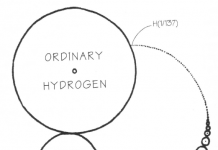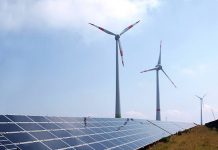Tom Konrad CFA
Almost every stock market sector fell significantly in late July and August this year, and such market declines send me searching for value stocks paying good dividends which I can hold for the long term. In mid-July, I found some decent values by sifting through the trash, but I was less enthused by the value proposition of conglomerates involved in the clean energy space. Today I’ll take a look at a group of companies you might expect to be good income producers: renewable energy power producers. These companies operate wind and solar farms, hydroelectric, geothermal, and biomass power plants, as well as cogeneration and recovered heat facilities.
They typically also develop such renewable energy facilities, but here I’ve chosen to focus on the ones that already have significant capacity under operation, as opposed to the ones which are tilted more towards development, because I’m interested in companies that have a chance to produce a significant income stream from dividends. Although some of these also have regulated utility operations, I’ve chosen to focus on independent power producers because regulated utilities tend to have a high proportion of fossil fuel assets.
Renewable Power Producers
The seven companies I’ve found that meet these criteria are:
- Algonquin Power and Utilities Corp (AQN.TO/AQUNF.PK), which owns hydroelectric, wind, landfill gas, cogeneration, and biomass generators, as well as some regulated water and wastewater utilities and an electric distribution business.
- Boralex (BLX.TO/BRLXF.PK) develops and owns wind, hydroelectric, solar, and biomass generation, as well as natural gas cogeneration facilities.
- Innergex Renewable Energy (INE.TO/INGXF.PK) owns 20 run-of-river hydroelectric plants and 3 wind farms, and is developing more hydro, and wind, as well as a solar farm.
- Capstone Infrastructure Corp (CSE.TO/MCQPF.PK) owns gas cogeneration, wind, hydroelectric, biomass and solar farms in Canada, and operates a district heating facility in Sweden
- Northland Power (NPI.TO/NPIFF.PK) owns wind farms, wood biomass, gas combined cycle and cogeneration plants mostly in Ontario.
- Brookfield Renewable Power Fund (BRC-UN.TO/BRPFF.PK), an owner of hydroelectric and wind farms.
- Ormat Technologies (ORA) is the vertically integrated geothermal industry leader, and also develops and owns recovered energy generation worldwide
- Covanta Holding (CVA) owns several energy-from-waste facilities in the US an Canada as well as a California based insurance company.
Below, I have compared the dividend yield, earnings yield, operating and free cash flow (OCF and FCF) yields, as well as Equity to Debt and Equity to Price ratios. The last two ratios have been inverted from their traditional forms (Debt/Equity and Price/Book) and scaled by a factor of 10. I inverted them so that larger numbers would reflect better value as with the other measures, and the scaling makes them easier to compare on the graph.

Many of these companies (Boralex, Capstone, Innergex, Northland, and Ormat) exhibit large negative FCF because of heavy investment in new generation facilities, so OCF probably gives a better comparison of these companies’ ability to generate cash from existing facilities, while FCF gives a better idea of the companies’ ability to pay dividends without raising additional funds. Capstone and Innergex’s dividends (9.5% and 13.64%) seem at first glance too high to be sustainable based on the ratios here, so much more research would be warranted before I would consider investing in either of these.
The Best Options for Income
Investors looking for current income will want to avoid those companies with large negative free cash flow. Algonquin Power and Brookfield Renewable Power both offer healthy dividends and have strong balance sheets with low Debt to Equity (high Equity/Debt) ratios and trade at modest Price to Book (Equity/Price) ratios. Both also seem to have the earnings and cash flow to maintain payouts given the flexibility afforded by their modest use of debt.
Value Stocks
Investors looking for value stocks will be attracted to Boralex, with its high Earnings yield and a Price to Book ratio of 0.7, despite the lack of dividend. Boralex may be somewhat volatile, however, given its relatively heavy use of debt, with more than twice as much debt as equity.
Conclusion
In the absence of retail Climate Bonds, Algonquin Power and Brookfield Renewable Power look like good options for the income investor wishing to add some clean energy to his or her portfolio, while Boralex deserves further research as a possible value play, so long as the current low price does not turn out to be the product of deeper financial problems.
DISCLOSURE: Long AQUNF.
DISCLAIMER: Past performance is not a guarantee or a reliable indicator of future results. This article contains the current opinions of the author and such opinions are subject to change without notice. This article has been distributed for informational purposes only. Forecasts, estimates, and certain information contained herein should not be considered as investment advice or a recommendation of any particular security, strategy or investment product. Information contained herein has been obtained from sources believed to be reliable, but not guaranteed.




